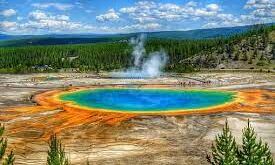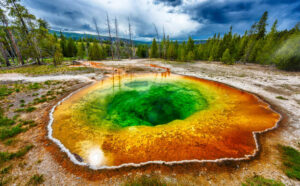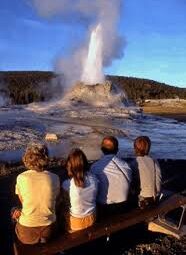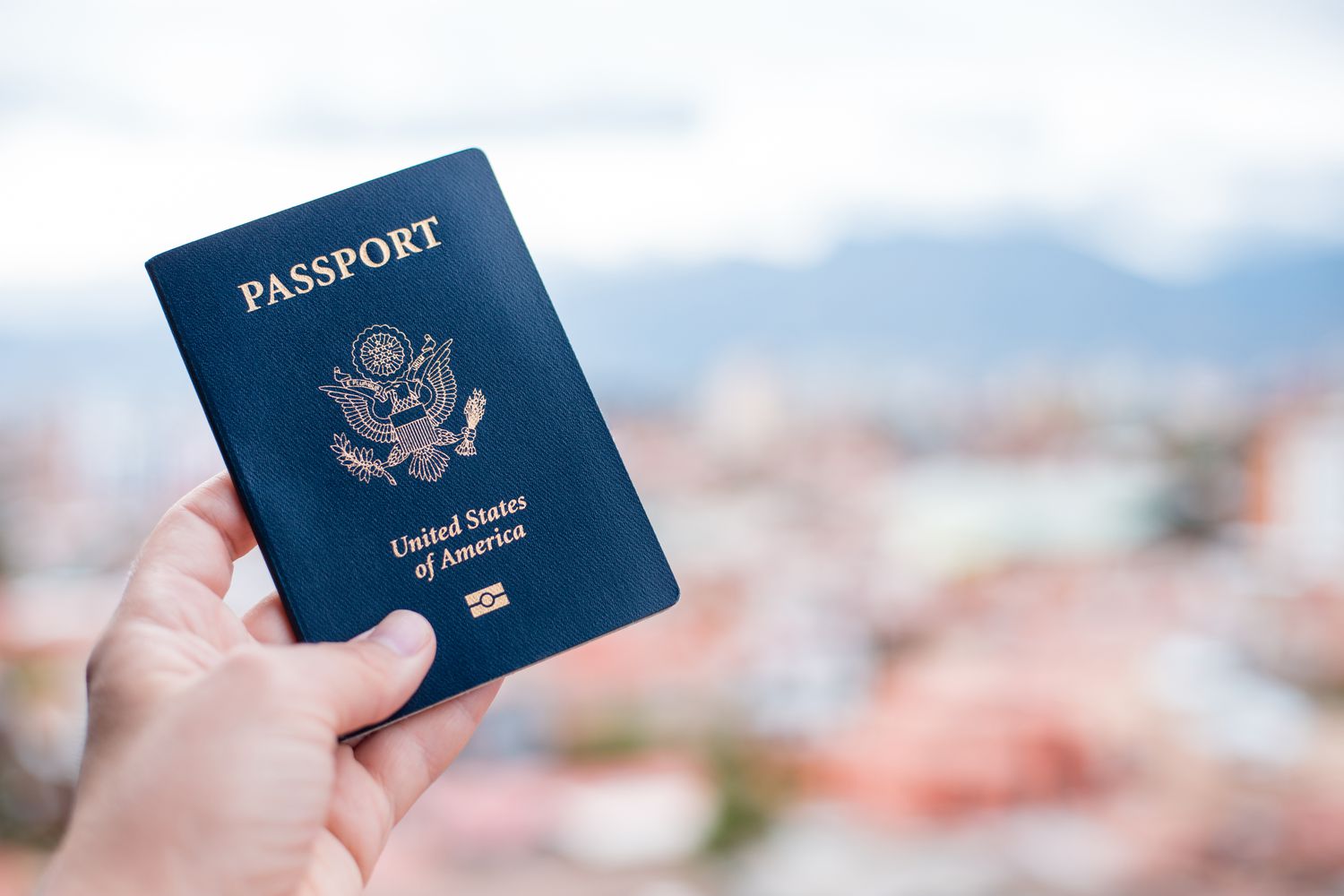Yellowstone National Park, a pristine expanse of wilderness and geothermal wonders, is not only a sanctuary for diverse flora and fauna but also a living canvas where the elements choreograph a mesmerizing dance. The weather in Yellowstone is as dynamic and awe-inspiring as the landscapes it graces, offering visitors a symphony of seasonal changes. In this comprehensive guide, we delve into the intricacies of Yellowstone National Park weather, exploring its patterns, influences, and the magical tapestry it weaves throughout the year.
Yellowstone National Park Weather
Yellowstone National Park experiences four distinct seasons, each contributing its own hues to the park’s ever-changing panorama.
Spring (March to May)
As winter’s icy grip begins to loosen, Yellowstone awakens with the vibrancy of spring. The park transitions from a monochromatic blanket of snow to a burst of color as wildflowers carpet the meadows. The weather during spring is variable, with lingering snow and chilly temperatures gradually giving way to milder conditions. Wildlife becomes more active, and the park’s iconic geysers, like Old Faithful, take center stage against the backdrop of emerging greenery.
Summer (June to August)
Summer is Yellowstone’s zenith, a time when the park basks in the warmth of the sun. Days are long, and temperatures range from pleasantly mild to comfortably warm. This season beckons adventurers, as hiking trails open up, revealing cascading waterfalls, pristine lakes, and panoramic vistas. The wildlife is abundant, with grizzlies, elk, and bison roaming freely. Visitors can witness the renowned Old Faithful erupt in a spectacular display of nature’s power.
Fall (September to November)
As summer bids adieu, Yellowstone transforms into a tapestry of autumnal brilliance. The park is adorned with the golden hues of aspen and cottonwood trees, creating a breathtaking spectacle. The weather in fall is characterized by crisp air and cooler temperatures, with occasional snowfall hinting at the impending winter. Wildlife enthusiasts flock to witness the dramatic elk rutting season, while geysers and hot springs provide a stark contrast to the changing foliage.
Winter (December to February)
Yellowstone’s winter is a tranquil marvel, blanketing the landscape in a serene layer of snow. Sub-zero temperatures and pristine snowscapes define this season, creating a haven for winter sports enthusiasts. The geysers, framed by icy sculptures, take on an ethereal beauty. Bison navigate through the snow, creating an iconic winter scene. While some roads and facilities close during winter, the park transforms into a serene wilderness, offering a unique and peaceful experience.

The Dance of Temperatures
Understanding Yellowstone’s temperature patterns is crucial for planning a visit and immersing oneself in the park’s diverse offerings.
Summer Temperatures:
During summer, daytime temperatures in Yellowstone typically range from 70°F to 80°F (21°C to 27°C). Evenings can cool down, with temperatures dropping to around 30°F to 40°F (-1°C to 4°C). While warm clothing is essential, the pleasant daytime temperatures make summer an ideal time for exploring the park’s extensive trail system and enjoying outdoor activities.
Fall Temperatures:
Fall brings a gradual cooling, with daytime temperatures ranging from 40°F to 60°F (4°C to 16°C). As the season progresses, temperatures may dip further, especially in the evenings. Visitors should come prepared for varying conditions, with layered clothing to adapt to temperature changes throughout the day.
Winter Temperatures:
Yellowstone’s winter is characterized by cold temperatures, often plummeting well below freezing. Daytime temperatures typically range from 0°F to 20°F (-18°C to -6°C), while nighttime temperatures can drop to -20°F to -10°F (-29°C to -23°C). Winter enthusiasts can revel in the snowy landscapes, but adequate cold-weather gear is essential for a comfortable experience.
Spring Temperatures:
Spring marks a transition from winter chill to milder conditions. Daytime temperatures during spring range from 30°F to 50°F (-1°C to 10°C), while evenings can still be chilly. As the snow begins to melt, the park comes alive with the emergence of new growth, and wildlife becomes more active.
The Influence of Altitude
Yellowstone’s diverse topography, ranging from high mountain peaks to lush valleys, contributes to significant variations in altitude. This altitude diversity plays a pivotal role in shaping the park’s weather patterns.
Lower Elevations:
Areas at lower elevations, such as the park’s northern and western regions, experience milder temperatures. This is especially noticeable during summer, making these areas popular for camping and outdoor activities.
Higher Elevations:
The higher elevations, particularly in the central and southern parts of the park, exhibit cooler temperatures, especially in winter. The famous Yellowstone Lake, situated at an elevation of 7,733 feet (2,357 meters), can experience freezing temperatures even during summer nights.
Understanding the influence of altitude is vital for visitors, as it allows for better preparation in terms of clothing, camping gear, and overall expectations based on the specific regions within the park.
Precipitation Patterns
Yellowstone National Park exhibits diverse precipitation patterns throughout the year, contributing to its varied ecosystems and geological features.
Summer Rainfall:
Summer brings the highest chances of rainfall, with occasional thunderstorms adding drama to the skies. The wetter conditions contribute to the lush landscapes and vibrant wildflower displays. Visitors should be prepared for sudden weather changes, and waterproof gear is advisable, especially for those exploring the park’s trails.
Winter Snowfall:
Winter is synonymous with snow in Yellowstone. The park receives a substantial amount of snowfall, transforming it into a winter wonderland. Snow blankets the landscapes, creating a serene ambiance. This seasonal transformation also impacts accessibility, with certain roads and facilities closing during the winter months.
Fall and Spring Transitions:
Fall and spring serve as transitional periods, with precipitation taking various forms. Fall sees occasional snowfall, especially toward the later months, while spring experiences a mix of rain and snow as the park emerges from winter’s grasp.
Understanding the precipitation patterns is essential for planning activities and ensuring a safe and enjoyable visit to Yellowstone.

Navigating the Seasons: What to Pack and When
Packing for a Yellowstone adventure requires careful consideration of the seasonal nuances. Here’s a breakdown of essential items based on the time of year:
Summer:
- Lightweight and breathable clothing for daytime exploration.
- Sturdy hiking boots for traversing the park’s diverse terrain.
- Sunscreen, sunglasses, and a hat for sun protection.
- Waterproof jacket or poncho for sudden rain showers.
- Insect repellent for protection against mosquitoes.
Fall:
- Layered clothing to adapt to fluctuating temperatures.
- Warm jacket or fleece for cooler evenings.
- Comfortable hiking boots for exploring fall foliage.
- Camera to capture the stunning autumn landscapes.
- Binoculars for wildlife watching during the elk rutting season.
Winter:
- Insulated, waterproof winter clothing to stay warm in sub-zero temperatures.
- Snow boots for navigating snowy trails.
- Hand warmers and thermal layers for added warmth.
- Snowshoes or cross-country skis for winter exploration.
- Camera to capture the park’s winter wonderland.
Spring:
- Waterproof boots for navigating muddy and wet trails.
- Layered clothing for adapting to changing temperatures.
- Rain jacket or poncho for spring showers.
- Binoculars for birdwatching as migratory birds return.
- Camera to document the emergence of springtime flora.
Chasing the Northern Lights: A Winter Spectacle
Yellowstone’s winter nights offer a celestial spectacle—the chance to witness the aurora borealis, or northern lights. While not as commonly associated with Yellowstone as with northern latitudes, the park’s clear winter skies and minimal light pollution create optimal conditions for observing this mesmerizing natural phenomenon. Winter visitors may be treated to dancing curtains of green and pink lights, adding an otherworldly dimension to the Yellowstone experience.
Planning Your Yellowstone Adventure: Tips and Considerations
- Check Road Conditions:
- Yellowstone’s vast expanse can be impacted by road closures, especially during winter. Check road conditions and closures before planning your trip.
- Respect Wildlife and Safety:
- Be mindful of wildlife safety, especially during encounters with bison, elk, and bears. Keep a safe distance and adhere to park guidelines.
- Altitude Considerations:
- Recognize the influence of altitude on weather and pack accordingly. This is especially important for those exploring higher elevations.
- Dress in Layers:
- Yellowstone’s weather can be unpredictable, with temperature variations throughout the day. Dressing in layers allows for easy adaptation to changing conditions.
- Be Weather-Aware:
- Stay informed about current and forecasted weather conditions. Be prepared for sudden changes and plan activities accordingly.
- Seasonal Closures:
- Some facilities and services close during the winter season. Check the park’s official website for updates on seasonal closures.
- Guided Tours and Programs:
- Consider joining guided tours or ranger-led programs to gain insights into the park’s natural wonders and history.
- Responsible Tourism:
- Practice responsible tourism by following Leave No Trace principles. Respect the park’s fragile ecosystems and minimize your impact on the environment.
Conclusion: Embracing Nature’s Symphony
Yellowstone National Park’s weather is not just a backdrop to the scenery; it is an integral part of the park’s character. From the ethereal winter landscapes to the vibrant hues of autumn, each season unfolds a unique chapter in the story of Yellowstone. Understanding the weather patterns allows visitors to synchronize their adventures with nature’s rhythm, creating an immersive and memorable experience in this unparalleled sanctuary.
As you navigate the geysers, traverse the trails, and marvel at the wildlife, remember that Yellowstone’s weather is a dynamic force, shaping the park’s ever-changing beauty. Embrace the unpredictability, savor the moments, and become part of the living tapestry that is Yellowstone National Park—a place where the weather is not just a condition but a captivating dance of the elements.





